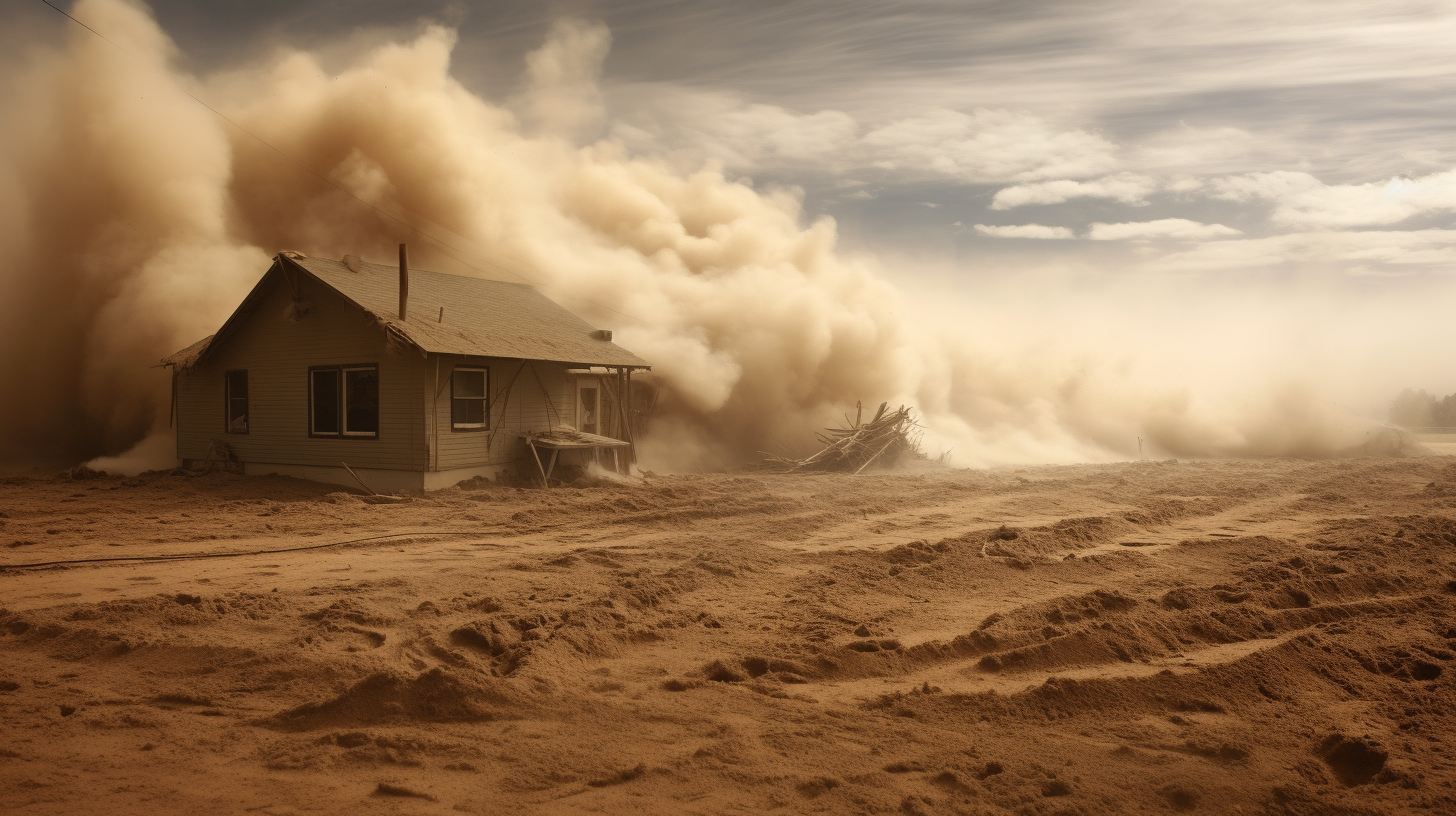In the sepia-toned annals of history lies the tale of the 1930s Dust Bowl, a cautionary fable of ecological catastrophe. What was once a historical blip is now a prophetic mirror in a tale best described as ‘A 21st Century Dust Bowl: Reaping the Whirlwind.’ We have, with careless abandon, sewn the seeds of our own destruction and are left with the bitter fruit of an earth choked by dust.
As we traverse the wastelands that were once bountiful cradles of greenery, we watch helplessly as the ceaseless dust storms ravage the remnants of civilization. These are not mere stirrings of silt and soil, but howling tempests of ruin, saturating the air, seeping into the crevices of our homes, suffocating the last gasps of wildlife, and burying our future under a grey shroud of decay.
The irony of it all? Our forebears fled the clutches of the Dust Bowl, yet we now clutch it to our breast, nurturing it with our hubris and blind faith in technology. Farmers, once the stewards of the earth’s fertility, now watch powerless as their land fractures, turning into a grotesque mosaic of aridity.
Through the whispers of the few who remain, stories emerge of cities entombed in dust: skyscrapers are but grave markers, monuments to human ingenuity now indistinguishable from the lifeless monoliths of old civilizations. The skies, too, shriek with the winds of change, as the once blue canvas is perennially grey, the sun a mere hypothesis.
The narrative we’ve weaved in previous articles, of deserts burgeoning and cities decaying, are not the ramblings of eco-nihilism but the morose testimony of reality—the same reality that speaks of desert waves engulfing habitats, of the ceaseless expansion of the Sahara and Gobi, far beyond the romance of exotic lands into the cold embrace of uninhabitability.
In this Weltanschauung, do we dare mention the phoenix of hope? Perhaps not. For while resilience is a common trait in these eschatological times—the attempt to regenerate soil, the tireless act of planting trees where none will grow—such efforts seem to merely postpone the inevitable.
In this ‘Century Dust Bowl,’ we are left with relics of the past: with dust-encrusted photographs of wheat-rich fields, with mementos of rivers that once teemed with life, now reduced to mere trickles of saline despair. In pockets of this arid expanse, we find those eternally optimistic farmers, their skin embroidered with the filigree of a thousand wrinkles, etched by the storms they face each day in grim determination.
Economic paradigms have shifted: wealth is no more linked to currency but to the possession of arable land and the vanishing glimmer of freshwater. Climate migration has surged, with populations moving not in search of better opportunity, but merely for a breath of air untainted by dust, a venial luxury in our times.
The ’21st Century Dust Bowl’ is our harvesting of ruin, reaped by the whirlwind of our own making. Let this narrative serve not as an epitaph for our squandered planet but as a dire siren for those who still listen. And if by some grace, we find remnants of humanity in our future selves, let the resonance of this tale remind us once more of what once was—and what should never again come to pass.
